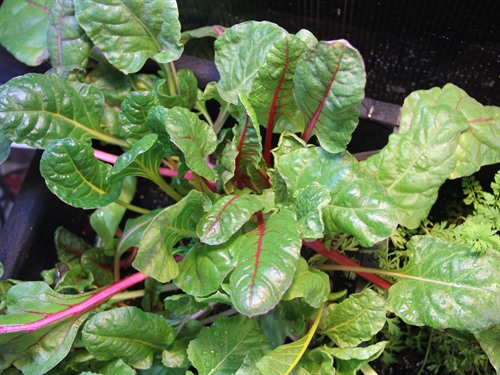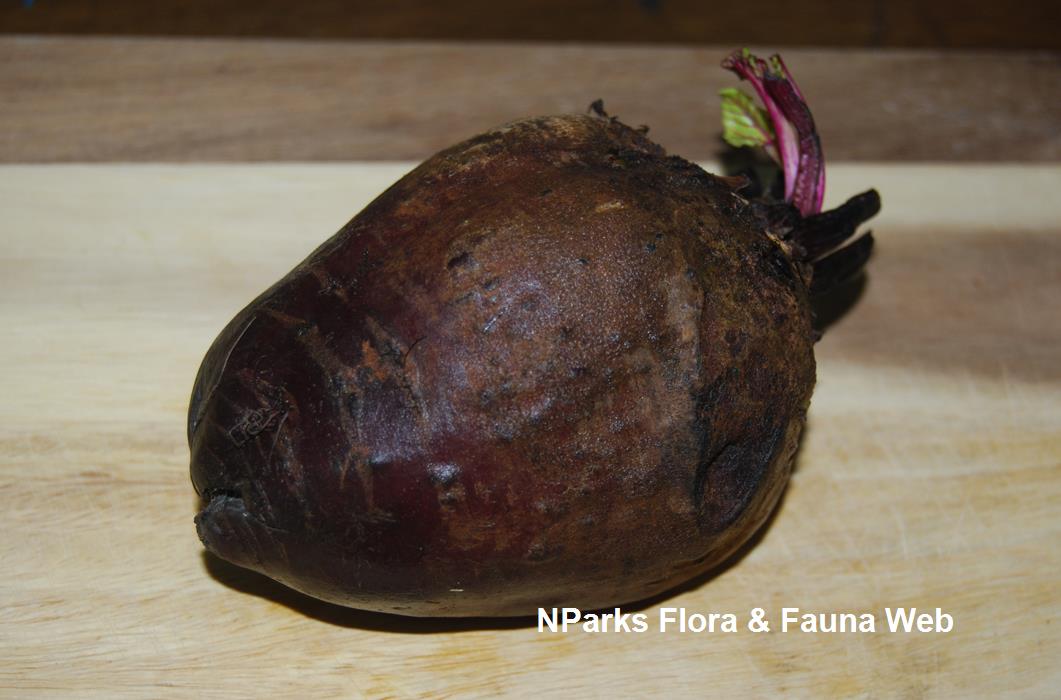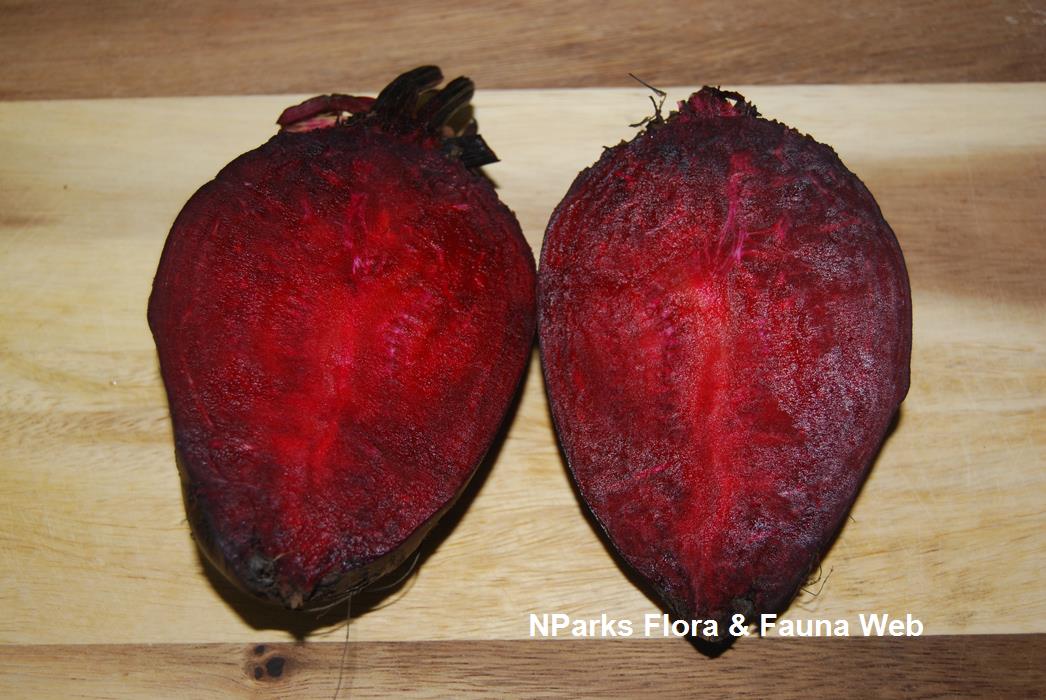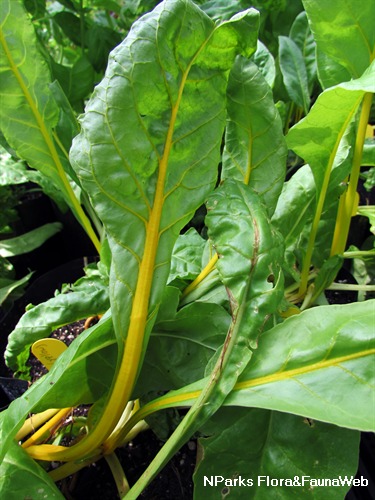
Name
Classifications and Characteristics
| Plant Division | Angiosperms (Flowering Seed Plants) (Dicotyledon) |
|---|---|
| Plant Growth Form | Herbaceous Plant |
| Lifespan (in Singapore) | Annual |
| Mode of Nutrition | Autotrophic |
Description and Ethnobotany
| Growth Form | Biennial herb. |
|---|---|
| Roots | The edible taproot is usually dark red to purple, but it can also be yellow or white. |
| Foliage | The oblong leaves have prominent venation which may be red, yellow or white. They are arranged in a rosette. |
| Stems | It has a short underground stem which is connected to the taproot. |
| Flowers | Small, bisexual flowers are arranged in a spike-like inflorescence known as a raceme. Each flower is composed of 3 carpels, 5 stamens and 5 sepals (the outermost layer of the flower) with no petals, and there is a narrow green bract below which is a modified leaf. Prolonged cold exposure at about 4-7 degrees Celsius is required to induce the root to produce a flowering stalk up to 1.2-1.8 m tall. |
| Fruit | The dry, indehiscent fruit is known as a nutlet and contains a single, round to kidney-shaped seed. |
| Cultivation | Beets are a cool season crop which will be difficult to grow outdoors in Singapore to obtain the beetroot. However, young leaves could be harvested by planting indoors near a sunny windowsill or under partial shade outdoors. Although they prefer full sun in temperate climates, afternoon sun is too hot for them in Singapore. They grow best in sandy, well-drained soils. The root can be harvested 7-8 weeks after sowing, and new leaves can be harvested from immature plants. |
| Ethnobotanical Uses | Edible Plant Parts : Edible Leaves, Edible Storage Organs Food (Fruit or Vegetable): Beetroot can be eaten raw or cooked in a variety of ways, such as roasting, boiling and baking. The roots are sweet (containing up to 10% sugar) and rich in vitamin C, folate, antioxidants and fiber. The young leaves can be added to salads and are rich in vitamins A, C and E. |
Landscaping Features
| Thematic Landscaping | Economic Garden |
|---|
Fauna, Pollination and Dispersal
| Pollination Method(s) | Abiotic (Wind) |
|---|
Plant Care and Propagation
| Light Preference | Semi-Shade |
|---|---|
| Water Preference | Moderate Water |
| Plant Growth Rate | Fast |
| Rootzone Tolerance | Well-Drained Soils, Saline Soils / Salt Spray, Fertile Loamy Soils |
| Propagation Method | Seed |
| Seed / Spore Germination Duration | 7 days to 14 days |
Foliar
| Mature Foliage Colour(s) | Green |
|---|---|
| Mature Foliage Texture(s) | Raised / Sunken Veins |
| Prominent Young Flush Colour(s) | Green |
| Foliar Type | Simple / Unifoliate |
Floral (Angiosperm)
| Flower & Plant Sexuality | Bisexual Flowers |
| Flower Colour(s) | Green, Red |
|---|---|
| Flower Grouping | Cluster / Inflorescence |
| Flower Location | Terminal |
Fruit, Seed and Spore
| Fruit Classification | Simple Fruit |
|---|---|
| Fruit Type | Indehiscent Dry Fruit , Nut / Nutlet |
Image Repository
Others
| Master ID | 33660 |
|---|---|
| Species ID | 8074 |
| Flora Disclaimer | The information in this website has been compiled from reliable sources, such as reference works on medicinal plants. It is not a substitute for medical advice or treatment and NParks does not purport to provide any medical advice. Readers should always consult his/her physician before using or consuming a plant for medicinal purposes. |



